
Qatar Airways Expands IFC Agreement With Inmarsat for Boeing 787-9 and 737-10 Fleet
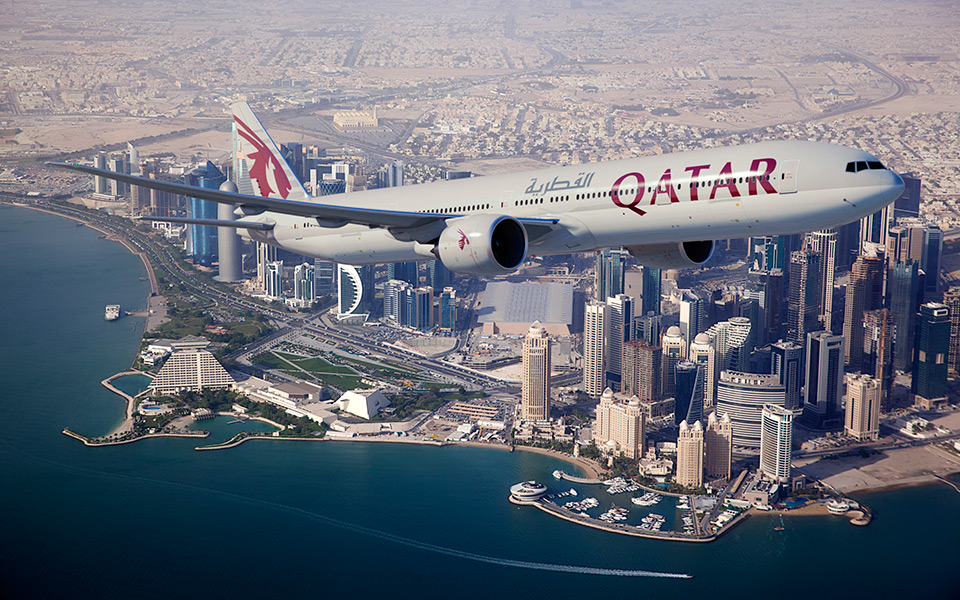
Qatar Airways selected Inmarsat’s in-flight connectivity (IFC) solution for its Boeing 787-9 and 737-10 fleet. This is an expansion of an agreement the companies signed in 2017 to install GX Aviation on the airline’s Airbus A350s and Boeing 777s.
GX Aviation has been activated on the first seven Boeing 787-9s, less than five months from contract award, the companies announced Wednesday.
Qatar Airways said this IFC expansion is particularly important as Qatar prepares to host the 2022 FIFA World Cup in November, bringing an influx of tourists to the country. Inmarsat is committed to meeting the bandwidth requirements for this event, and Qatar Airways plans to offer passengers match scores, video replays and game livestreams. The airline’s service model is to offer one hour of free access to its Super Wi-Fi with the option to purchase full access for the remainder of each flight.
“We were amongst the first airlines in the world to adopt [Inmarsat GX Aviation] and remain the largest operator of GX-equipped aircraft in the Middle East and North Africa,” said Akbar Al Baker, Qatar Airways Group Chief Executive. “As the 2022 FIFA World Cup approaches, Inmarsat is the perfect partner we need to ensure Qatar Airways can offer unrivaled inflight connectivity to each and every passenger.”

In-Flight Connectivity Players Revisit Questions About the Business Model Versus Demand

PARIS — Mobility, and in particular aviation, remains a key barometer for the satellite industry, as it looks to diversify its revenue streams away from video/broadcast. In-flight Connectivity (IFC) remains a key target market for many big players. The market was shaken up this year when Starlink announced a deal with Hawaiian Airlines.
Against this backdrop, at World Satellite Business Week (WSBW), executives from El Al Airlines in Israel, Corsair, Anuvu, and Gogo Business Aviation examine the current state of IFC and what is next for a market that has had a turbulent couple of years.
Tal Kalderon, head of In-Flight Entertainment & Connectivity, El Al gave an interesting perspective from an airline point of view. He said that El Al has seen a significant upswing in terms of people looking to fly and that the demand for connectivity is high as well. Customers continue to expect the same level of connectivity service they get on the ground.
However, given the investment involved, going to a completely free model for an airline could be difficult to justify. He said, “I hope in the future it will be free, but I don’t know yet, but that is the plan. In short haul flights, people don’t use things like Netflix and Spotify. We give connectivity free to business class passengers. The demand for connectivity in flights to Europe is quite low. However, having said that, passengers would still like to have the option, so we still offer it as a possibility on short haul flights.”
The ultimate vision for El Al is to not have separate IFC and IFEC [in-flight entertainment and connectivity] systems, and have one IFC system that powers everything. Kalderon added, “The dream of El Al is to have only one system. Today, we have IFC and IFEC. In the future, passengers will get all the content and services through an IFC system. Ultimately, we won’t need to provide movies on a server. Most airlines are going for free, even if just for business class. Most providers are working on ways to get streamed content to the aircraft.”
Kalderon admits it is important that an airline has access to the best technology when it comes to IFC, even if replacing equipment means it is tricky to make decisions. “We must always make sure we are getting the best technology. So, previously it was Ka-band. Technology is progressing fast. We know it is a huge investment. We don’t see a choice. The demand is growing all the time,” he said. “We don’t know yet what future iterations of technology will look like. I don’t believe in the next few years, we will change the antennas or the hardware on board, as an example. But, if we find out, the technology isn’t providing what we want, we have SLAs with our providers. We need to ensure we have the best technologies.”
Enea Fracassi, COO of Corsair, a French charter airline, said they had a good summer, but one noticeable change was people are taking a much shorter term outlook when booking flights.
When talking about the importance of connectivity, he said, “People are really careful about the price [when booking flights]. Price is still the priority. I don’t think connectivity is a driver when people are booking flights. The take-up rate [of IFC] is still quite low. Having said that, a Wi-Fi connection is becoming an essential. It is becoming part of the landscape. Most people want it as part of the package.”
Like El Al, making it successful from a business point of view remains a challenge. Fracassi said, “I haven’t met any airline that has made a success of it (IFC) in terms of P&L. We need to keep systems very simple. We are dealing with a number of providers and this isn’t easy.”
Anuvu has plans to launch its own constellation of satellites to offer a more well-rounded service to airlines. Josh Marks, CEO, Anuvu said the industry was at a “transformational point.” He spoke about the ‘free’ model and how ultimately it could be seen to pay off for airlines. He said: “A number of clients have gone ‘free’ on Wi-Fi, and that drives 30 percent take-up rates. If you have a platform, and you can get that number up to 80 percent of the flight accessing connectivity, there is a chance to market it, and offer personalized services to customers. What we are hearing from airlines is how can we make this profitable as an investment?”
In terms of its own approach, Marks says Anuvu believes in an ecosystem business model, and that this will provide the best value for airlines.
“Our view of the world is a hybrid approach is the right one. So, one where you can have multiple technologies. What we are looking at now is an ecosystem model. We are launching our own constellation. The rapid development of LEO is key to this ecosystem,” he said. “GEO satellites have a key role also. They definitely help in terms of capacity scalability. From a customers’ perspective, the system has to work 100 percent of the time. We have to re-orientate how we think about satellite coverage around the world. The constellation is there to provide additional coverage.”

JSX CEO Gives Starlink In-Flight Internet Updates at FTE Global
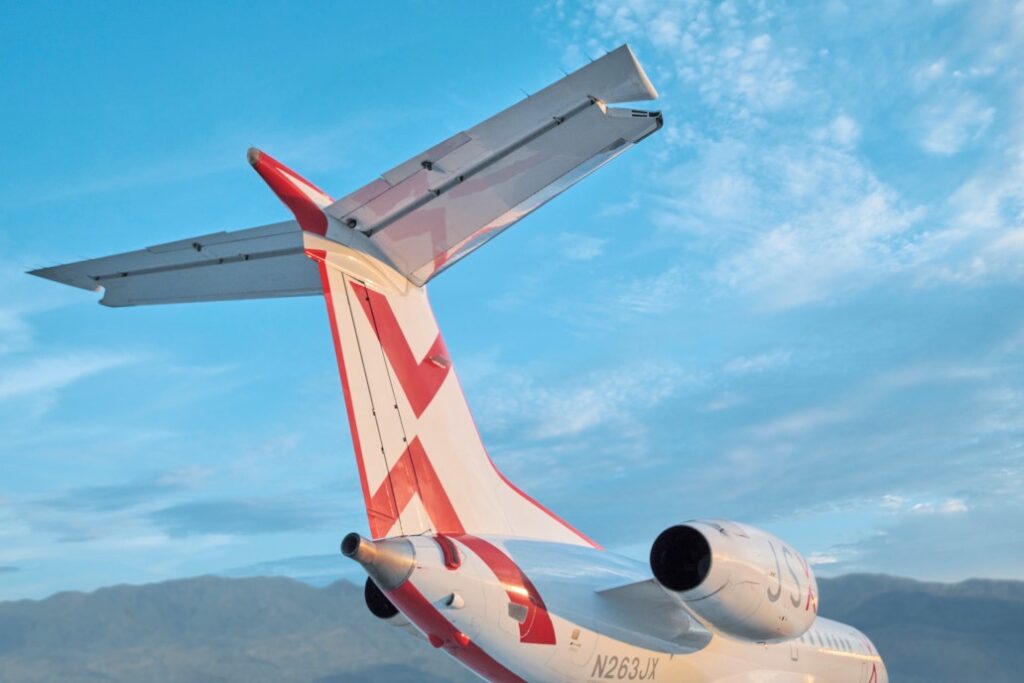
JSX expects to begin operating its first passenger-carrying flight featuring SpaceX’s Starlink in-flight connectivity (IFC) service by October, according to comments made by the charter operator’s CEO Alex Wilcox at the Future Travel Experience (FTE) Global event earlier this month.
The California-based company was confirmed as the launch air carrier for Starlink IFC in April, marking SpaceX’s first entry into the commercial aviation IFC market. During his participation in the FTE panel discussion “In-flight Experience 2030,” Wilcox provided a timeline for the launch for the new service and some insight into how it will work.
“Probably the number one complaint we get from customers is no Wi-Fi. We’re the launch customer for SpaceX Starlink Wi-Fi solution, that will be on every airplane by the end of this year,” Wilcox said, adding that the first Starlink-equipped JSX flight should occur by October.
Starlink is a constellation of Low-Earth Orbit (LEO) satellites with a focus on enabling broadband internet service in remote areas. SpaceX has launched more than 3,000 Starlink satellites for the constellation this year, according to recent reporting by Via Satellite, a sister publication to Avionics International.
JSX operates a fleet of 77 total Embraer 135s and 145s, and currently has Starlink antennas, modems, and wireless access points installed and testing on two of its aircraft. Wilcox described the performance of Starlink on those two aircraft as working “amazingly well.”
The JSX co-founder said that even with the technology still in testing mode, they were actually able to use it as an alternative to airport internet service. According to Wilcox, during a recent internet service outage at Hollywood Burbank Airport, JSX airline staff took a laptop onboard one of their Starlink-equipped aircraft and used that to check passengers in instead.
“That’s how good it is,” Wilcox said.
While JSX already confirmed that it will offer the service free of charge to passengers, Wilcox provided more insight into how the Starlink IFC service will be operated and accessed.
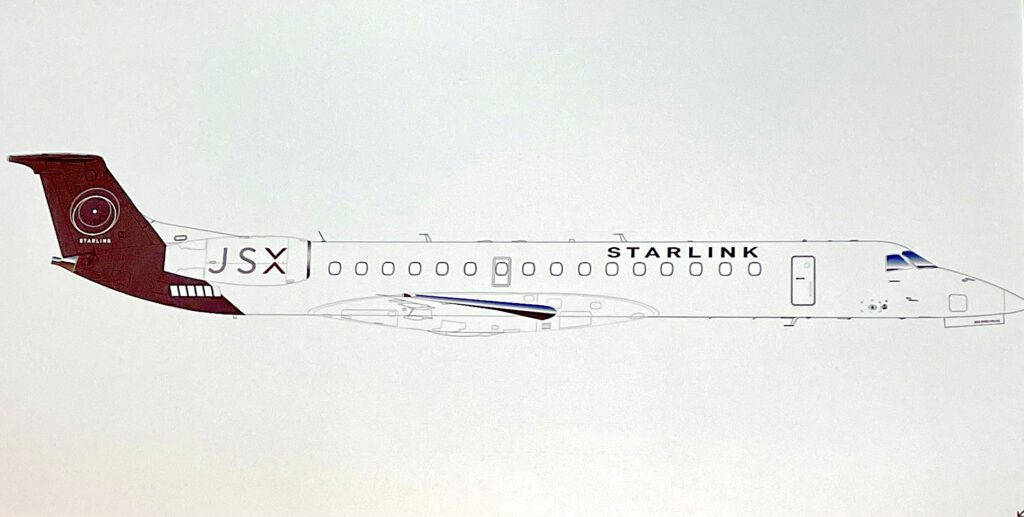
“That’s going to be lounge to lounge service, the second you get on the airplane, all you need to do is click on the SSID and you’re on,” he said. “There’s no login, no credit card, nothing, just on and open for everybody. It’s 200 mbps to the airplane and it’s awesome.”
When asked whether JSX would consider adding seatback in-flight entertainment (IFE) screens to its Embraer fleet, the air carrier’s CEO said he believes they’re “firmly in the bring your own screen camp” and does not see that investment happening any time soon.
Hawaiian Airlines was confirmed as SpaceX’s first major commercial airline customer shortly after JSX became the launch air transportation customer in April. Hawaiian will also offer the service to passengers for free, and expects to begin equipping its aircraft with Starlink terminals next year.
SpaceX’s top Starlink executive, Jonathan Hofeller, said during his appearance at the Connected Aviation Intelligence Summit earlier this year that several other airline agreements are in the works as well.

Spirit Airlines CIO Eyes Use of In-Flight Connectivity to Transmit Flight Operational Data

LAS VEGAS — Two months after switching its new in-flight internet service on for the first time, Spirit Airlines Chief Information Officer (CIO) Rocky Wiggins provided more insight into how the low-cost airline wants to expand its use of connectivity for both passengers and operations.
Spirit first started providing in-flight connectivity (IFC) to passengers on some of its Airbus A320 fleet in July, and will continue equipping its entire fleet with the service over the next few years. During a fireside chat session at the Future Travel Experience (FTE) Global event in Las Vegas this week, Wiggins explained how Spirit wants to optimize its use of connectivity for both passengers and flight operations in the near future.
“The things you can look forward to in the near future will [include extending] the product from a 10,000-foot limit to gate-to-gate,” Wiggins said.
According to Thales, Spirit’s IFC service is enabled by a set of strategic agreements first established with satellite operators SES and Hughes Network Systems in 2017. Under the agreements, SES contracts Hughes for service on EchoStar XVII and EchoStar XIX HTS satellites, and combines them with its AMC-15 and AMC-16 satellites to provide the four-satellite network initially enabling connectivity for Spirit passengers.
In August, Thales confirmed through a post on its LinkedIn account that some of Spirit’s aircraft have also started connecting to a fifth high throughput satellite (HTS), SES-17. In-flight internet purchasing options for Spirit passengers have been separated into a browsing category that starts at $2.99 and a streaming category that starts at $5.99.
While acknowledging the benefits of providing passenger connectivity during his fireside chat at FTE, Wiggins also discussed how Spirit views its return on investment related to the new IFC service and whether charging passengers for access could provide ancillary revenue. Eventually, he believes the airline could exploit the service for transmitting operational data about aircraft components and system faults or maintenance needs in real time.
“The return on that investment is a bit squishy, it’s further out and it requires a tremendous amount of discovery,” Wiggins said, regarding the potential to create ancillary revenue from passengers paying for IFC.
But the Spirit CIO said there could be major potential in using the connectivity to transmit operational data in real time. In recent years, both airlines and in-flight connectivity service providers have offered a wide variety of perspectives on how high-speed connectivity can be used to stream flight operational data to ground crews or operations bases to inform them of potential aircraft maintenance issues or items that need to be addressed once an aircraft lands.
Viasat for example, features a data sheet on its website explaining how their partnership with Teledyne enables the use of a connected aircraft interface device (AID) to transmit real-time flight data for “enhanced flight and maintenance operations” that the company claims can be done at a lower charge than sending that data over the aircraft communications, addressing and reporting system (ACARS). In April, the Collins Aerospace-sponsored publication Connected Aviation Today featured an interview with a UPS flight operations manager discussing the concept of predictive maintenance.
Airbus also discussed the topic in April for an article published by FAST, their internally distributed online magazine. “The crew can also use the SATCOM to contact the [Airline Operations Center] AOC regarding, for example, an HF system fault message alert during the flight which could impact the next flight dispatch,” the French airplane maker notes in the article.
Wiggins said Spirit is a big believer in the concept but has not yet started using its connectivity to transmit real-time operational data.
“We knew that we wouldn’t be getting engineering data off the aircraft in-flight right away, but as we put the Thales deal in place it already was structured to let us do that,” Wiggins said. “I can already point to a handful of events that I want to know right away that occur on the aircraft that I can transmit down to the destination airports so they can be ready to respond, that reduces our turn time. We have a handful of those, we think right now the potential is tremendous, and it’s going to require a significant amount of data mining, machine learning and discovery. We’re preparing to do that because we think the payoff could be quite huge in terms of aircraft utilization, turn time, and a less disruptive experience for our customers. But the program isn’t built on that.”

Will New DOT Rule Require US Airline Refunds When In-flight Internet Does Not Work?
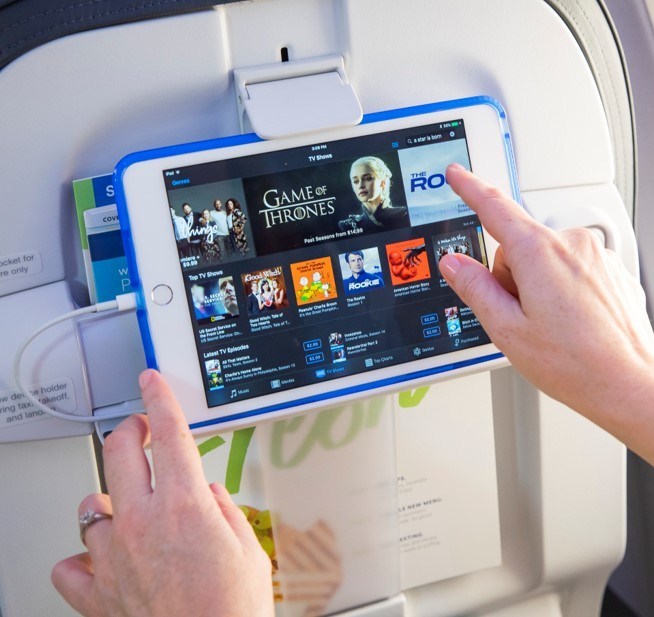
On September 26, the U.S. Department of Transportation released a new Notice of Proposed Rulemaking (NRPM) “Enhancing Transparency of Airline Ancillary Service Fees,” that could require U.S.-based airlines to provide refunds to passengers who pay for in-flight internet services that malfunction or do not work during their flight.
The NPRM was released as part of a White House Competition Council meeting held this week where U.S. government officials announced DOT’s NPRM as part of 72 other initiatives developed by more than a dozen federal agencies with the goal of addressing “some of the most pressing competition problems across our economy.” A major focus of DOT’s NPRM is to increase the level of transparency airlines are required to provide when passengers are purchasing air travel tickets to include disclosure of all fees such as checked baggage and preferred seating at the initial point of purchase.
“Airline passengers deserve to know the full, true cost of their flights before they buy a ticket,” U.S. Transportation Secretary Pete Buttigieg said in a Sept. 26 press release. “This new proposed rule would require airlines to be transparent with customers about the fees they charge, which will help travelers make informed decisions and save money.”
A provision within the NPRM would require airlines to provide refunds to passengers that pay for services that are not available or provided in-flight. DOT specifically references “broken WiFi” as one of those services that would require a refund in the new NPRM.
The agency also defines in-flight internet services as one of the ancillary revenue fees that airlines could be required to refund if the new rule becomes effective. DOT proposed the rule on Sept. 26 and is allowing a 60-day comment period on its details. Check out the full 72-page NPRM here.

United Airlines Gives T-Mobile Users Free In-flight Connectivity
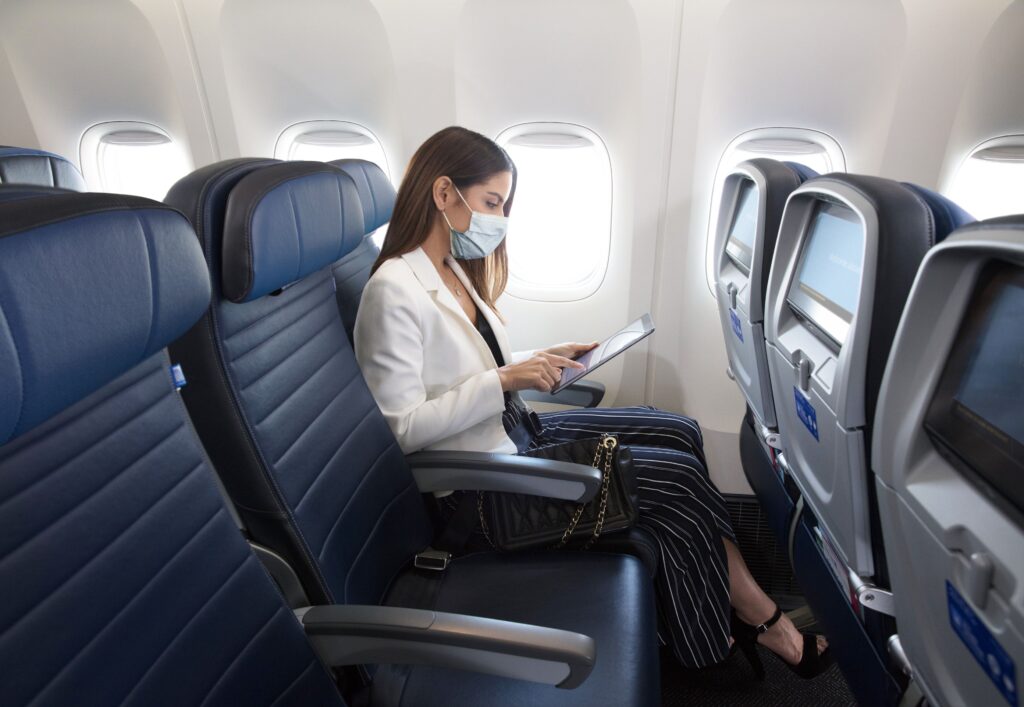
United Airlines has become the latest major U.S. air carrier to provide certain T-Mobile customers access to free in-flight connectivity (IFC) services where available.
T-Mobile announced similar “Un-carrier” deals with American, Alaska and Delta Air Lines in June. Under these new agreements between T-Mobile, the airlines and their respective in-flight connectivity service providers, T-Mobile users of certain cellular plans get the “ability to text, email, search and stream all flight long where available,” according to the company’s announcement this week.
“Whether it’s for business or leisure, we know staying connected in the air is important, and we’re excited many of T-Mobile’s customers will experience our free inflight Wi-Fi on their phones when flying United,” Grant Milstead, United’s Vice President of Digital Technology, said in a Sept. 23 press release. “With the free in-flight coverage, customers can take advantage of Wi-Fi to text their family and friends or browse their favorite sites and apps.”
Coverage Beyond is the new program T-Mobile rolled out in June, that includes partnerships and agreements the company has established with some of the leading in-flight connectivity service providers such as Viasat, Intelsat, Gogo and others.
To gain access to the free connection “all flight long,” the T-Mobile user must have “Magenta MAX, Business Unlimited Ultimate and equivalent Sprint plans,” according to their June 21 announcement.
“Now, T-Mobile customers can stay connected from takeoff to landing and beyond on hundreds more flights, now including United Airlines!” said Mike Sievert, CEO of T-Mobile, commenting on the latest airline to join the program.

#CAIPODCAST Ep. 88: Shift5 CGO Talks Cybersecurity and Unleashing Connected Aircraft Innovation Faster

On this episode of the Connected Aviation Intelligence Podcast, Shift5 Chief Growth Officer and co-founder Michael Weigand is the guest.
Shift5 is a cybersecurity company that focuses on protecting transportation and military infrastructure and assets from cyberattacks. The company was co-founded in 2018 by Weigand and Josh Lospinoso, a former US Cyber Army Officer who previously founded RedOwl Analytics, which was acquired by Raytheon/Forcepoint in 2018.
Weigand is responsible for executing Shift5’s long-term growth objectives. Prior to Shift5, Michael served eight years in the US Army as an Airborne, Ranger qualified, Infantry officer and was selected as one of the first Cyber operations officers.
He discusses some of the certification and innovation challenges faced by companies developing new electronics software and systems for aircraft which has typically lagged behind advancements in other markets.
Check out this excerpt from the interview below, where the Shift5 CGO compares advancements in other technology markets and how they compare to aviation:
“There are some companies out there doing an amazing job providing aircraft connectivity and other solutions. But the pace of software development that we all take advantage of in our professional lives and where we’ve seen disruption in the automotive industry where we can push over the air software updates, and advance functionality and user features and benefits in a car—think of advances made by Tesla and other manufacturers that are incorporating a lot of those concepts into their newer offerings—we just don’t yet see or have that in the aviation space. A big part of that is regulation. How do we ensure that things are tested and are safe to the levels of requirements and performance expectations that we have in aviation? But candidly, I just think there is a way to achieve both of these things. To deploy especially software features and functionality and advancement faster and provide more value while also maintaining safety. I don’t think that we’ve even begun to scratch the itch there in aviation.”
This episode is sponsored by Shift 5.
Shift5 is the OT cybersecurity company that protects the world’s transportation infrastructure and weapons systems from cyberattacks.

Listen to this episode below, or check it out on iTunes or Google Play. If you like the show, subscribe on your favorite podcast app to get new episodes as soon as they’re released.

Intelsat and OneWeb Partner on LEO/GEO In-Flight Connectivity

OneWeb and Intelsat have signed a global distribution agreement to offer a multi-orbit in-flight connectivity (IFC) service combining Low-Earth Orbit (LEO) and Geostationary Orbit (GEO) satellite capacity. The companies announced the agreement Thursday and expect it to be in service by 2024.
Under the agreement, Intelsat will distribute OneWeb capacity coupled with its service. Intelsat said this will fill gaps in IFC coverage and capacity at airport hubs, across oceans, and over polar routes.
“This level of connectivity will enable airlines to maximize brand affiliation with passengers through all their onboard services – delivering a truly connected end-to-end passenger journey,” said Jeff Sare, Intelsat’s new president Commercial Aviation. “The hybrid service offering further allows the global airline community to plan their suite of next-generation onboard services with confidence – not only ensuring a future-proofed passenger inflight connectivity experience, but also the implementation of a connected airline digitalization strategy.”
Ben Griffin, OneWeb vice president of Mobility Services, called the deal a “watershed moment” for the IFC market and said the partnership delivers the highest value for the lowest risk.
This partnership comes after Intelsat announced a new IFC solution in June, with a new multi-orbit capable, electronically steered array terminal to offer increased flexibility to its airline customers.
OneWeb is in the midst of a deal to combine with operator Eutelsat.

#CAIPODCAST Ep. 87: How NetForecast Measures In-Flight Internet Quality of Experience

On this episode of the Connected Aviation Intelligence Podcast, Alan Jones, Chief Technologist for NetForecast, joins to discuss how his company helps airlines generate quality of experience scores for in-flight internet services and applications.
NetForecast is a Virginia-based independent provider of in-depth analysis and reporting on internet performance and user experiences. It was founded in 1999 and has leadership that participated in co-writing the Airline Passenger Experience (APEX) Connectivity Working Group specification “Evaluating the Passenger Connectivity Experience.”
As the company’s chief technologist, Jones is responsible for the design and deployment of NetForecast’s QMap network user experience quality monitoring service. He heads research and development for user experience measurement, data collection, and cloud-based aggregation for terrestrial, mobile, and satellite-based internet services.
Jones discusses some of the basic metrics NetForecast uses to measure in-flight internet network service performance, how airlines can produce in-flight connectivity Quality of Experience scores, and more.
Listen to this episode below, or check it out on iTunes or Google Play. If you like the show, subscribe on your favorite podcast app to get new episodes as soon as they’re released.

#CAIPODCAST Ep. 86: AirFi CEO Talks Wireless IFEC and Creating Mall in the Sky for Airlines

On this episode of the Connected Aviation Intelligence Podcast, Job Heimerikx, CEO and co-founder of AirFi, joins to discuss commercial airline wireless in-flight entertainment and connectivity trends.
AirFi, a global supplier of wireless in-flight entertainment and connectivity technologies, is headquartered in the Netherlands. Their technology is rather unique in the in-flight entertainment and connectivity market because of its size and what it can enable for airlines in terms of applications such as in-flight movies, ordering meals, and payment validation.
Some of their airline customers include Sun Country, Eastern Airlines, Corendon Dutch Airlines, and Atlantic Airways, among others. We discuss the unique size of their wireless IFEC solution, how they’ve added Iridium connectivity to their technology, and why they’re finding that the type of low bandwidth non-streaming connectivity they’re providing is still popular with airlines in 2022.
Listen to this episode below, or check it out on iTunes or Google Play. If you like the show, subscribe on your favorite podcast app to get new episodes as soon as they’re released.


